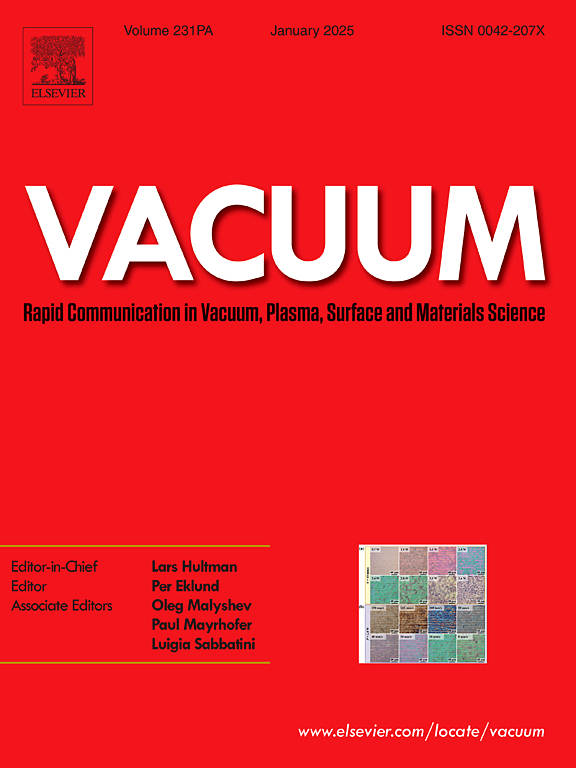晶体的巴氏放热破碎
IF 3.8
2区 材料科学
Q2 MATERIALS SCIENCE, MULTIDISCIPLINARY
引用次数: 0
摘要
目前,人们正在对高压下的物质特性进行广泛研究。然而,人们很少关注晶体的巴氏破碎。我们的工作致力于研究这种效应的性质。基于分析方法(即不使用计算机模拟),我们研究了晶体的比(单位面积)表面能(σ)与归一化体积(v/vo)沿各种等温线的变化。随着 v/vo 值与 (v/vo)max 的等温偏差(减小或增大),σ(v/vo) 函数减小,并在特定值 (v/vo)frS < (v/vo)max < 1 或 (v/vo)frL > 1 时变为负值。在 v/vo < (v/vo)frS 或 v/vo > (v/vo)frL 时,σ(v/vo) 函数的这种行为应该会导致晶体的自发破碎,在这种情况下,晶体会以任何方式努力增加其比表面(每个原子):自由面(拉伸时)或晶间面(压缩时)。这表明,在全方位拉伸的情况下,晶体进入液相或气相时不会达到 (v/vo)frL 值。然而,晶体在全方位压缩时表面能可以达到负值。研究表明,σ(v/vo)函数的负值应同时刺激晶体结构的破碎和破碎介质的加热(放热效应),以及由于内表面的出现而在该介质中产生的额外压力。对 Ne、Li 和 Au 晶体在不同温度下的 (v/vo)max 和 (v/vo)frS 值进行了计算。根据实验数据,指出了与计算 (v/vo)frS 值相对应的压力。实验表明,这些静态压力在现代实验中是可以达到的。本文章由计算机程序翻译,如有差异,请以英文原文为准。
Baric exothermic fragmentation of crystals
Currently, an extensive study of the properties of matter at high pressures is underway. However, little attention is paid to the baric fragmentation of the crystal. Our work is devoted to the study of the nature of this effect. Based on the analytical method (i.e. without computer simulation), the change in the specific (per unit area) surface energy (σ) of the crystal from the normalized volume (v/vo) along various isotherms was studied. It is shown that there is a maximum on the isotherm σ(v/vo), with (v/vo)max < 1. With an isothermal deviation (at decreasing or increasing) of the v/vo value from the (v/vo)max, the σ(v/vo) function decreases, passing at certain values, (v/vo)frS < (v/vo)max < 1 or (v/vo)frL > 1, to the negative values. This behavior of the σ(v/vo) function at v/vo < (v/vo)frS or v/vo > (v/vo)frL should cause spontaneous fragmentation of the crystal, in which the crystal will strive in any way to increase its specific (per atom) surface: either free (when stretched), or intercrystalline (when compressed). It is indicated that the crystal under all-round stretching passes into the liquid or gas phase without reaching the (v/vo)frL value. However, a negative value of the surface energy can be achieved with all-round compression of the crystal. It is shown that the negative value of the σ(v/vo) function should stimulate both fragmentation of the crystal structure and heating of the fragmenting medium (exothermic effect) and the appearance of additional pressure in this medium due to the appearance of the inner surface. Calculations of (v/vo)max and (v/vo)frS values for Ne, Li and Au crystals at different temperatures have been performed. Based on the experimental data, the pressures are indicated, which correspond to the calculated (v/vo)frS values. It was shown that these static pressures are quite achievable in modern experiments.
求助全文
通过发布文献求助,成功后即可免费获取论文全文。
去求助
来源期刊

Vacuum
工程技术-材料科学:综合
CiteScore
6.80
自引率
17.50%
发文量
0
审稿时长
34 days
期刊介绍:
Vacuum is an international rapid publications journal with a focus on short communication. All papers are peer-reviewed, with the review process for short communication geared towards very fast turnaround times. The journal also published full research papers, thematic issues and selected papers from leading conferences.
A report in Vacuum should represent a major advance in an area that involves a controlled environment at pressures of one atmosphere or below.
The scope of the journal includes:
1. Vacuum; original developments in vacuum pumping and instrumentation, vacuum measurement, vacuum gas dynamics, gas-surface interactions, surface treatment for UHV applications and low outgassing, vacuum melting, sintering, and vacuum metrology. Technology and solutions for large-scale facilities (e.g., particle accelerators and fusion devices). New instrumentation ( e.g., detectors and electron microscopes).
2. Plasma science; advances in PVD, CVD, plasma-assisted CVD, ion sources, deposition processes and analysis.
3. Surface science; surface engineering, surface chemistry, surface analysis, crystal growth, ion-surface interactions and etching, nanometer-scale processing, surface modification.
4. Materials science; novel functional or structural materials. Metals, ceramics, and polymers. Experiments, simulations, and modelling for understanding structure-property relationships. Thin films and coatings. Nanostructures and ion implantation.
 求助内容:
求助内容: 应助结果提醒方式:
应助结果提醒方式:


